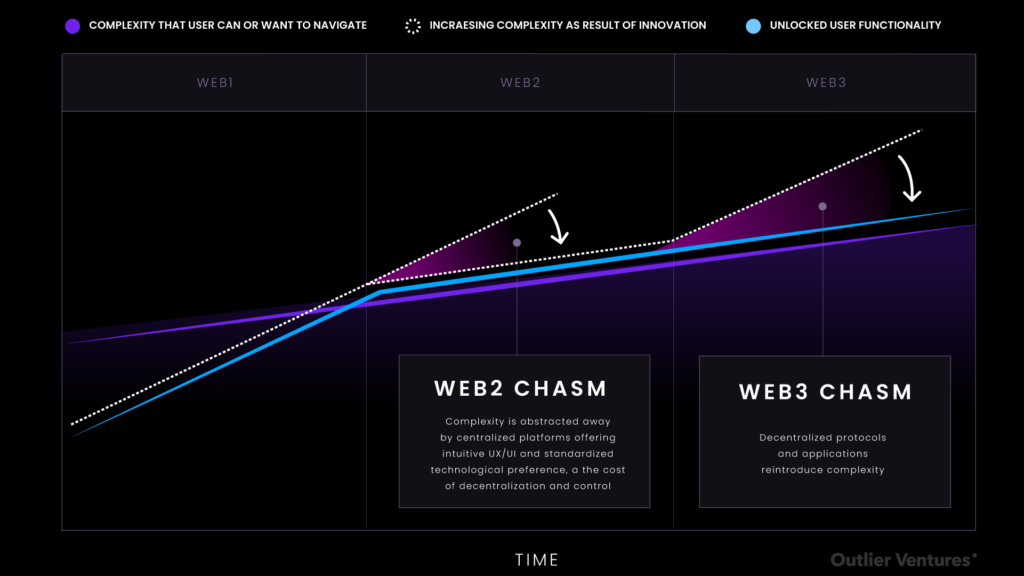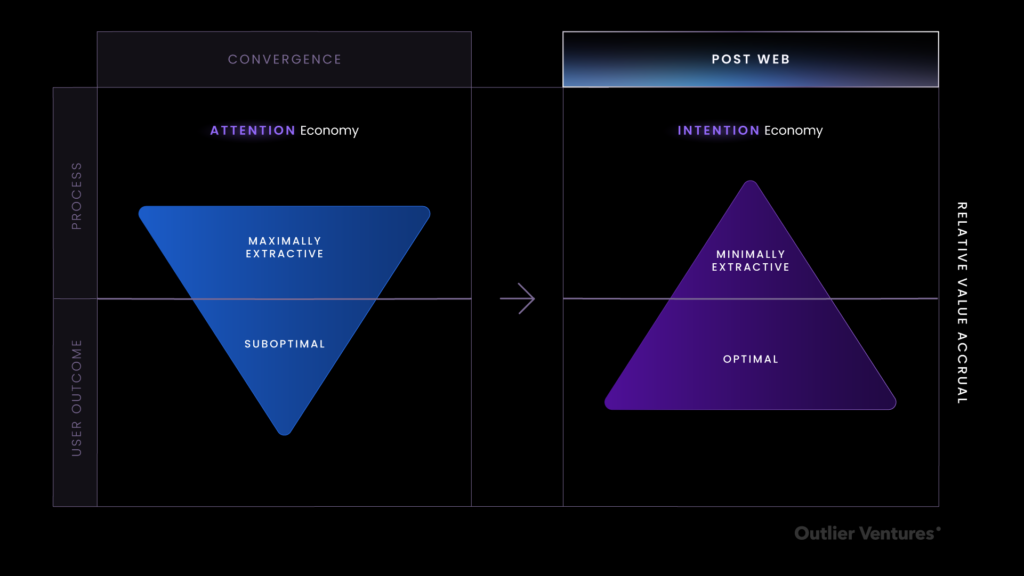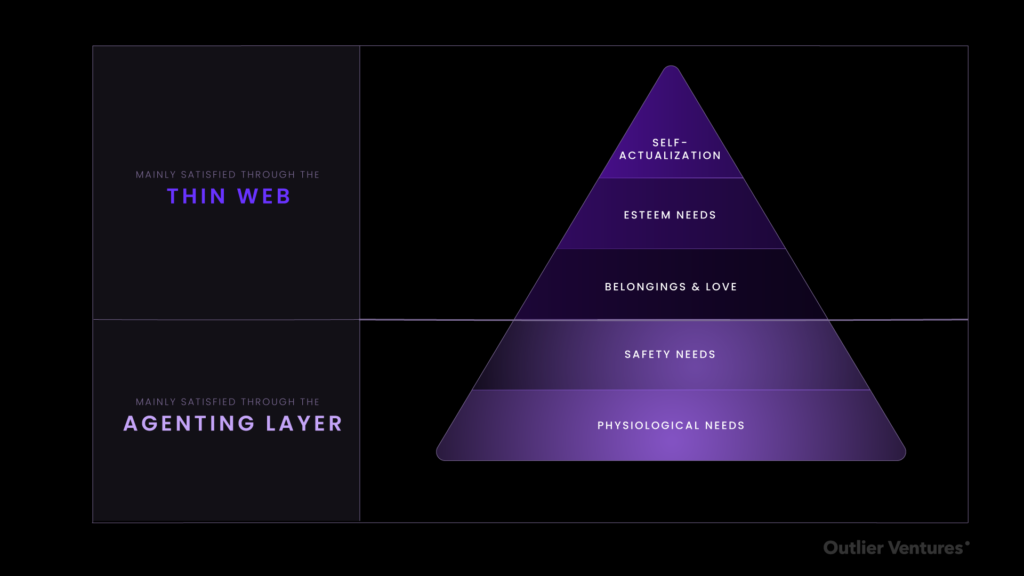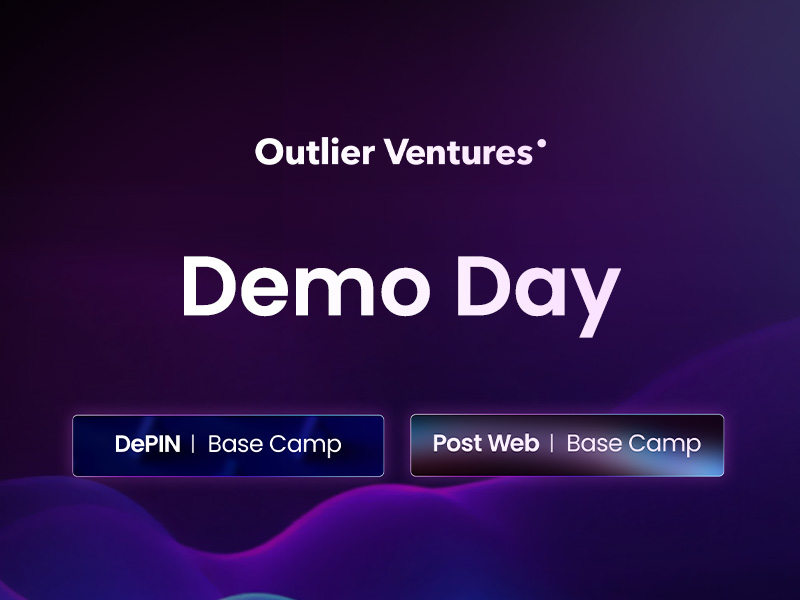Welcome to The Post Web Deep Dive, an exploration of Outlier Ventures’ latest thesis that outlines how AI, Web3, and decentralization converge to reshape the internet. In this series, we unpack the frameworks, tech stack, and business models driving The Post Web era.
Imagine an internet without the endless scroll, the pings, or the fight for your focus.
Welcome to the dawn of The Post Web, a radical reimagining of the internet fueled by the accelerating convergence of AI and a decade of innovations in Web3. In this transformative paradigm, much of our current experience of the consumer internet will be outsourced to autonomous agents who have no use for much of what the web is today.
As these intelligent systems handle the majority of transactional and economic activity through their own interfaces, what remains for human interaction?
The answer: the “Thin Web” — a residual yet profoundly significant layer of the internet, reserved for purposeful and enriching human experiences. This isn’t just a minor redesign; it’s a fundamental shift in how we engage with the digital realm, one deeply rooted in our intrinsic human needs.
Jamie Burke on The Post Web
From Web3 to The Post Web: How We Got Here
To understand the emergence of the Thin Web, we must first trace the journey from the promises of Web3 to the impending reality of The Post Web.
Web3 emerged with the promise of digital ownership and the unbundling of dominant Web2 platforms through decentralization and user sovereignty. But more than a decade later, these ideals have yet to fully materialize — Web2 platforms still dominate. The complexity introduced by decentralized systems created a “chasm,” making the full functionality of Web3 accessible only to the most tech-savvy.

Recognizing these limitations, the concept of “Convergence” has come to the forefront — a transitory phase where AI increasingly blends with the internet, the Internet of Things (IoT), and infrastructure, giving rise to a new data economy.
This convergence unfolds in stages:
- AI-augmented: where AI assists human users.
- AI-orchestrated: where AI agents act autonomously.
- Post Web: where AI agents become the primary actors, and human web usage begins to fade.
It’s in this final stage that the Thin Web comes into view.
What Is the Thin Web and Why It Matters
The Thin Web will be defined by a few powerful shifts.
First, it will offer hyper-contextual experiences, generated on-the-fly by AI agents and adapted in real time to each individual’s needs and context. Say goodbye to the one-size-fits-all interfaces of Web2.
Second, it will prioritize purposeful and enriching engagement. Freed from the distractions of the attention economy, humans will interact with this thinner layer of the web for moments that genuinely matter, like social connection, immersive shopping, or entertainment that goes deeper.

This signifies a crucial shift from the Attention Economy, which prioritizes capturing user focus through constant interruptions, to an Intention Economy, where the internet optimally organizes around solving user intents through highly contextual interfaces. The Thin Web will also blur the lines between digital and physical reality, enabling more immersive and intelligent experiences across social, commercial, and creative spaces.
Beyond the Scroll: Designing for Human Intention
To understand the why behind the Thin Web, it helps to look at Maslow’s Hierarchy of Needs.

Most commoditized, everyday digital activity (like routine purchases, bookings, form submissions) will be offloaded to AI agents working behind the scenes. The Thin Web will instead surface for higher-order needs:
- A meaningful conversation
- A personalized shopping moment
- A rich, immersive gaming experience
These interactions will be mediated through browser-like interfaces at first, but will evolve quickly. However, the true power of the Thin Web lies in its dynamic nature, driven by AI agents. These agents will leverage user wallets, which will evolve into comprehensive hubs for managing personhood, assets, and interactions, to access necessary data, assets, and verified permissions. Based on user intent and context, agents will generate hyper-contextualized environments, potentially incorporating image, text, video, and even code generation to create tailored and immersive experiences. Over time, interaction could become increasingly voice-driven, relying on semantic maps between agents and humans.
In short: the Thin Web becomes the digital layer where intent meets experience.
And just as importantly, it’s not the fragmented, dopamine-hunting internet we know today. It’s not filled with tabs, pop-ups, or infinite scroll. It’s not where routine economic activity takes place. Instead, it’s the quiet, powerful space where your attention aligns with purpose.
Go Deeper: The Full Vision Behind The Post Web
A More Purposeful Internet in the Age of AI
The Thin Web is not merely a stripped-down version of the internet; it represents a fundamental reimagining of user interaction in a world increasingly powered by AI. It is the space where human intent takes precedence over the relentless pursuit of attention, ushering in an Intention Economy focused on delivering genuine value and optimally organized around solving user needs.
While AI agents become the primary actors for a vast range of tasks, the Thin Web will remain as the portal to those user experiences that resonate with our higher-order human needs, offering the potential for more purposeful, enriching, and ultimately, less extractive engagements with the web. The infrastructure of the internet itself will remain the bedrock of communication and data exchange, but the way we directly experience it will become thinner, more focused, and profoundly more intentional.
Stay Ahead of The Post Web Shift
A new Post Web Accelerator recruitment cycle is coming soon.
Want to be the first to hear about it? Subscribe to our newsletter to get early access to the call for startups. Plus, get future reports, founder insights, and exclusive content on The Post Web and what’s next.




